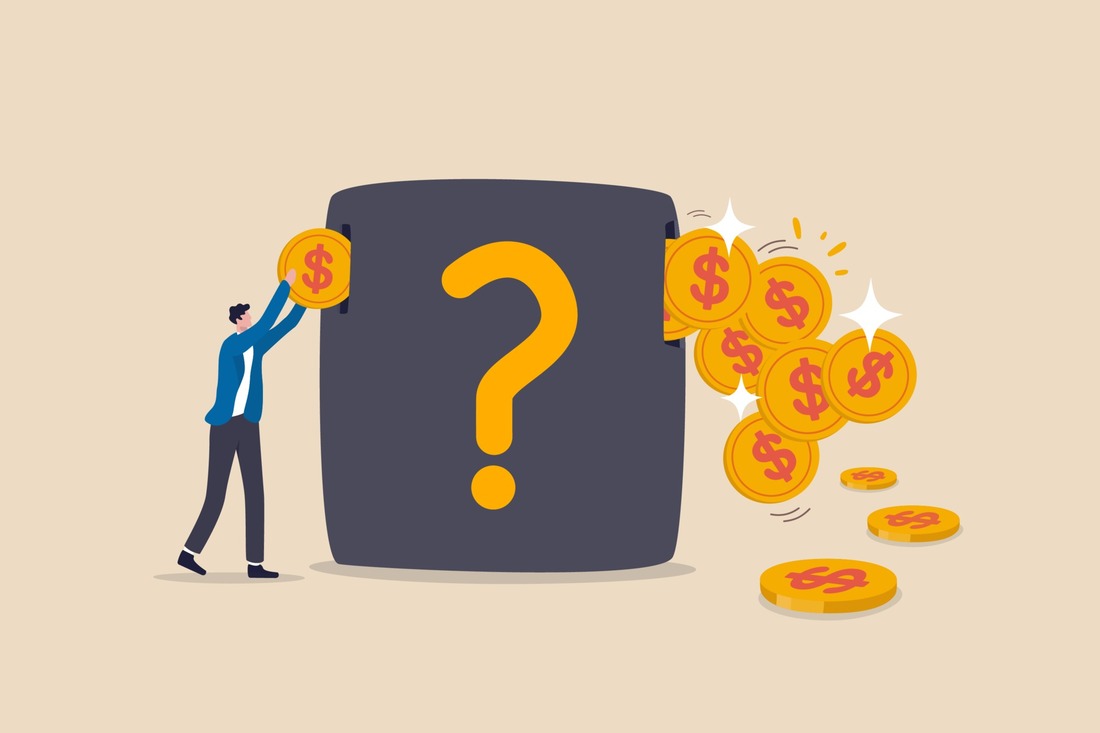|
You can listen to this episode on YouTube.
Retirement is a dream shared by many of us, but achieving it requires careful planning and early action. In this article, we’ll delve into the world of retirement savings and reveal exactly how much you need to save each month to retire comfortably. So, if you're aiming for financial independence but are possibly thinking it’s a pipe dream, buckle up and discover the key to retiring early!
Understanding the two pension types – DC and DB pensions Before we jump into the numbers, let's familiarize ourselves with the two primary types of pensions: Nowadays, most people have "defined contribution" (or DC) pensions, where the amount you and your employer contribute determines your retirement income. The risk lies with you, because your return, i.e. the pot of cash you’ll have at retirement, depends on the performance of the stock market. Previously, "defined benefit" (or DB) pensions were more common, guaranteeing a pension until death based on your final or average salary and the years of service. However, DB schemes have mostly been phased out and won’t be covered in this article. If you have a DC pension, if the stock market performs poorly you’ll either have to work longer or plan for a leaner retirement. Defined contribution schemes are sometimes called ‘money purchase’ schemes or self-invested personal pensions (SIPPs). They are similar to what Americans call 401K plans. How do you calculate your retirement "pot"? To estimate the size of the retirement fund you'll need, we can employ a simple rule of thumb. Multiply your desired annual retirement income by 25, and voila! You have worked out roughly how much you should aim to accumulate. But why 25? This is based on the ‘4% rule’ – a widely accepted guideline that suggests that withdrawing 4% of your invested pot annually, ensures your money lasts. Research has shown that even after three decades, your investments tend to grow due to average growth rates of a diversified investment fund surpassing the 4% withdrawal rate. {If the nerd in you wants to get into the maths: 4% = 4/100 and 100/4 = 25; … you don’t need to understand the maths, though, just use the rule} Estimating your retirement expenses – how much will you need to spend in retirement? Now, let's discuss the various lifestyle options and corresponding expenses you might encounter during retirement: according to research conducted by Loughborough University and the Pensions and Lifetime Savings Association, we can categorise retirement lifestyles into three levels: minimum living standard, moderate lifestyle, and comfortable lifestyle. To account for inflation experienced since these studies were done, I’ve increased the figures by 20%. To maintain a minimum living standard, a single retiree requires an annual income of £12,240, while a couple would need £18,840. For a moderate lifestyle, the figures rise to £24,240 for a single person and £34,920 for a couple. Lastly, to enjoy a comfortable retirement, aim for an income of £39,600 if you're single or £57,000 for a couple.
(source: moneyfacts.co.uk; and increased by 20%)
What are these different lifestyles assuming? A minimum living standard assumes a single retiree spends £46 per week on a food shop, has a one-week holiday and a long weekend in the UK each year, does not own a car and spends £555 a year on clothing and footwear. With a moderate lifestyle, our single retiree spends £55 on food each week, enjoys two weeks in Europe and a long weekend in the UK each year, and spends £900 on clothing and footwear each year. With a comfortable lifestyle, the single retiree spends £67 per week on their food shop, enjoys three weeks in Europe every year and spends £1,200-£1,800 on clothing and footwear each year. Calculating your investment targets Using the 4% rule and these lifestyle figures, we can estimate the amount you need to save for retirement. Here's a breakdown based on your desired lifestyle and whether you're single or part of a couple:
I know that these numbers look huge. But keep listening, I’ll show you that you can achieve them much more easily than you think.
Getting started: how much to save each month Now, let's explore the exciting part—how much you need to save each month to reach your retirement goals. Assuming you're a basic rate taxpayer, investing in a global passive fund with an average annual growth rate of 7% (we’ll discuss whether this is a reasonable assumption in a future post), aiming for the ‘comfortable’ lifestyle (i.e. £990k if single; £1.425m for couples) and ignoring the state pension (I’ll explain why in the next article) and employer contributions these are the monthly amounts you need to put into a pension account based on your starting age (rounded to the nearest 5): Each month until you’re 68 you need to save:
What the table shows is that the younger you start saving and the longer you save for, the less you need to set aside each month.
Factors that can offset the numbers Don't worry if these saving targets seem daunting because there are several factors that can actually work in your favour, offsetting even the larger amounts you need to save if you start late. Let's take a look at these positive factors:
In conclusion, securing a comfortable retirement requires forward thinking. If you didn't have this information when you started working, don't worry—now you do! There's no time like the present to start saving for your future. And here's a bonus: you can share this valuable knowledge with your children, ensuring they don't make the same mistake that many others do—starting too late. With the right strategies and a proactive approach, you can pave the way for a financially secure and fulfilling retirement. Your future is in your hands. References What Is the 4% Rule for Withdrawals in Retirement and How Much Can You Spend? Q&A: How much do I need to save for a comfortable retirement? Pensioners need a £33,000 a year income to enjoy a comfortable retirement Fidelity Retirement calculator How to get the £260,000 pension pot needed for a comfortable retirement - and why it might not be as hard as it sounds Dave Ramsey investment calculator (ignore the $sign) Fidelity.co.uk retirement calculator
0 Comments
Hi Heather
I’m really enjoying your podcasts and have already given a 5 star rating. I am 57 and plan to retire at 60 so love your retirement items. When talking about 4% draw down for retirement income, it’s never clear if the figures are before or after tax. For example 4% of £1m is £40k, but after tax this could be nearer £30k. If you then get a state pension of say £9k, the figure before tax is £49k, but after tax it is nearer £35k. So when you talk about money needed in retirement, do you mean before or after tax? Thanks, David
David, thanks so much for the review! I definitely appreciate it.
First things first, David I am sorry that it’s taken me ages to get a blog post done on this, however, I did respond to your question directly within 24 hours of you asking it so I hope that will make up for the late blog post response to your question which you asked me roughly 3 months ago and 4 months ago by the time this airs on The Money Spot podcast. Turning to the 4% rule… For those that have not ever heard of it, the 4% rule states that if you don’t want your pot of invested retirement funds to run out before you die, the maximum you can take from that pot each year is 4%. This means that if you want an annual income of 40,000 from your retirement pot, you need to save one million (GBP, USD, EUR) – I believe the study was done using American stock market performance but if you invest in a global portfolio it will be heavily weighted towards the US so you can use the 4% rule as the best proxy we have on what a reasonable withdrawal rate is. To answer, David’s question, the 4% drawdown is gross and you would have to pay tax after that. So, if you have £1,000,000 (for simplicity) in your pension pot in a given year, you would draw £40,000 and pay the tax on that. If you are based in the UK, you cannot throw the gross amount drawn from your SIPP or other taxable investment account into listentotaxman.com to get a calculation of your after-tax income because your drawings from your investments are chargeable to capital gains tax so you don’t pay income tax on them but capital gains tax. Capital gains tax rates are different. In 2020, assuming 50% of the £40,000 you draw is capital gains, then your net income after tax would be calculated as follows: Not taxable: £20,000 (this is the portion you actually saved) Taxable: £20,000 (the capital gain) Deduct capital gains tax allowance: (12,300) Taxable: £7,700 This taxable amount all falls into the basic rate band for 2020/21 so you’d pay tax of 10% on it, i.e. £770. If you had a portion in the higher rate tax band even that is only taxable at a rate of 20%. So, out of the £40,000 the net amount received would be £39,230. This is a huge different to what you would have paid if this was income of £40,000 as the net income would have amounted to £30,841. That’s a difference of £8,389 – wow! People on work place pension will be taxed in that way because the DB pension counts as income, you can’t separate it into capital and capital gain. If you are UK based and have reached your state retirement age then you would have an annual state pension. This is taxable to income tax and you can throw the total annual state pension amount that you receive into listentotaxman.com to figure out how much you will receive after tax. State pension is taxable if all your sources of income sum exceed the threshold needed to pay tax. That annual state pension is just over £9,000 so if that’s your only source of retirement income you wouldn’t pay any tax because it’s below the personal allowance of £12,500 – however, if this is you, you probably wouldn’t be the type of person that listens to personal finance podcasts - #JustSaying. A few BIG things to remember though: ISAs If your retirement income is all in your ISA then it is all tax free; not tax needs to be paid. Capital gains tax allowance Current tax rules allow you to have a tax free allowance on capital gains in addition to the tax-free personal allowance SO your tax bill may be much less than you think because your state pension and any other pension income may fall into the regular income bucket and this enjoy a separate tax free allowance. For 2020 the Capital Gains tax-free allowance is £12,300. I don’t know if this will be available when I retire, there’s talk of eradicating it to raise more tax… Early retirement Those that retire very early, and I’d classify anything before 55 as early may be overdrawing if they draw 4% because the study of the 4% rule was based on a 30-year retirement. David, you’re probably okay given you’re 57. Sequence of returns risk Sequence of returns risk analyses the order in which your investment returns occur. If a high proportion of negative returns occur in the beginning years of your retirement, these negative returns will have a lasting negative effect on the balance of your investment portfolio and the amount of income you can withdraw over your lifetime is reduced. This is sequence of returns risk. However, if you have a few years of good returns when you retire and negative returns only occur later, say in the middle of retirement, then there’s a lasting positive impact. If this happened to me, I would probably stop drawing income from my retirement pot for 2 or 3 years and live off non-stock market income, e.g. if you have cash pot set aside, I’d deplete that first; or I’d consider getting a part-time job; or for those fortunate enough to have rental income, you can live on that and give your investment portfolio time to recover. I think that’s all the main stuff. To summarise:
I hope this answers all your questions and I additionally hope that I threw in a few thoughts that you hadn’t considered. Heather p.s. subscribe to my podcast and ask me any money question, HERE - do it now!
Hi Heather, just discovered your podcast and blog. Really inspiring. Could I ask a question?
I have about £10k to invest and I’m considering three options. I’d really appreciate your help in deciding what to do.
Any advice would be hugely appreciated. Many thanks Nik M
Hi Nik
I apologise for the delayed response as I realise your question was time-sensitive but I was in project execution mode over the last two weeks. I think this is an awesome question and I’ll tell you how I would go about thinking about this. Firstly, did you know that I too am a civil servant with access to the Alpha pension scheme? Let me know via the comments box if you did know. I have never mentioned it in any blog or podcast before but it is on my LinkedIn. Given what you have said about when you could access your SIPP, I am guessing you are about 43 years old, i.e. you have 12 years to reach age 55 when you can access the SIPP and if your retirement age is 67 then you have 24 years until you can access your Alpha pension savings. There are 4 keys things you might want to consider:
PORTFOLIO EFFECT By portfolio effect I mean you should consider how the lump-sum is invested in the context of other sources of income you expect to have in retirement. Firstly, I opted out of the Alpha pension scheme because my husband works for the NHS and has access to their defined benefit scheme and because we manage our household finances as a single unit, I felt we could take more risk. His NHS pension gives us a safety cushion and I went for the civil service partnership pension which works exactly like a SIPP in that what I get at retirement depends on the return. An added benefit is that I can access the money at age 55 rather than 67 if I want to although I doubt I would do that as I’d rather use up my ISA savings first. THE RETURNS Average stock market returns have historically been about 10%. This could be the same in the future or it could be different. There are no guarantees. I am not sure what your passive investment portfolio is specifically invested in but I will assume it is a passive global fund and as you haven’t said it is in an ISA, I will assume it’s in a taxable investment account. The last time I looked for a reasonable return to use to model my future returns I found an article that suggested 9% gross and 6% net of inflation was reasonable. I prefer to use 7% gross and 4% net of inflation. If we go for the 7% return in taxable brokerage account – i.e. ignore the SIPP option to begin with:
If you drew the money down according to the 4% rule which says that you should draw no more than 4% of an invested portfolio so that it doesn’t run out, then if you start to draw on this money from age 67 (same as when you would have access to your Alpha pension money) you would draw £2,028 in the first year of retirement (50,700 x 4%). The following year when you are 68, you would draw £2,083 i.e. (50,700-2,028) x 1.07 x 4% - you draw slightly more because although the money has been drawn it is still invested and continues to grow at the average rate of 7%. These are gross numbers – what about after inflation? If you wanted to look at what you would be drawing after inflation, then in the equivalent of today’s money you would draw £1,024 (25,600 x 4%) and you would draw slightly more in real terms the following year. You need to compare what this looks like against Alpha. I know Alpha is inflation protected but I am not clear whether the £1k increase in Alpha payments that you mention is from today or whether it’s £1k from the age of 67 and growing from inflation at that point. If it’s £1k and growing with inflation from today then at the age of 67 you would be getting £2,030 in real terms (1,000 x 1.03^24) whereas with the stock market investment you were getting only £1,024 in real terms – from this perspective Alpha is a no-brainer as it’s a guaranteed £2k per year until death rather than a probabilistic gross drawdown of £2k per annum. I see the stock market as broadly providing some inflation protection given all companies increase the prices of their products over time. If it’s the case that the increase in the Alpha pension is £1k at age 67 then growing by inflation from that point then the additional gross £1k in real terms after 24 years is only £490 (1,000) / (1.03^24) – in this case the stock market investment looks much more attractive. If you go for Alpha with self and dependents then multiply the Alpha benefit by 90% to evaluate the impact. If we go for the 7% in a SIPP account – then you get an immediate uplift because there is an immediate tax saving. As a higher rate tax payer note that the SIPP provider would only claim tax relief at the basic rate of tax and you would need to claim additional tax relief via your self-assessment tax return or if you don’t do a tax return you would need to call HMRC to see if you could just do it by changing your tax code. With the full tax relief £10k translates to £16,667 in your SIPP.
If you drew the money down according to the 4% rule, then if you start to draw on this money from age 67, you would draw £3,380 gross (84,530 x 4%) or about £1,700 in inflation adjusted terms and steadily growing. From a returns perspective putting the money into a SIPP begins to look very attractive indeed. This brings us to the next consideration, horizon/flexibility.
HORIZON / FLEXIBILITY
With a SIPP you have access to the money from age 55. Unless you are 100% sure you don’t want to retire before age 67 or even to part-retire then you don’t need earlier access to the money. With the money in a taxable brokerage account you can draw the full gross amount invested in one go, if you like. There would be tax to be paid but you would still have the full amount if you wanted it. You can reduce the tax amount due from a full drawdown if you put half i.e. £5k into your own investment account and half into a spouse’s investment account. You can avoid tax completely by putting the full £10k into an ISA (the annual limit is £20k so you would be within that). INHERITANCE If you have all your assets in a defined benefit pension plan then your dependents don’t have access to those assets except to the extent defined by the plan. For Alpha, if you die before your spouse then I believe your spouse continues to get 37.5% of what you would have got and children only get a benefit if they are under 18 or under 23 and in full time education. With a SIPP your family gets everything invested and under current tax law money sitting in a pension is protected from inheritance tax if you die before the age of 75 (this could change given the tax rules are constantly changing). So, as basic example, if you died at the age of 67– in 24 years just before you could claim any pension, if your 10k had been invested in:
I apologise that this response is so full of numbers but this is essentially all the things you need to think about and the numbers are pretty important when we are thinking about pension and retirement options. IN SUMMARY If having access to a few pots of money before the age of 67 is important to you or if passing on some cash to dependents matters, then Alpha is not attractive. If you are risk averse and want to ensure you have a comfortable, guaranteed inflation-linked pension pot then plough the £10k into the Alpha pension plan as this would suit your risk tolerance better. I hope this helps! Heather Have a money question for me?
If you have any personal finance questions send them to [ME] – I respond to all emails but there can be a lag of a few weeks between me getting a question and responding to it as I try to give very comprehensive responses.
|
Heather on WealthI enjoy helping people think through their personal finances and blog about that here. Join my personal finance community at The Money Spot™. Categories
All
Archives
September 2023
|
Heather Katsonga-Woodward, a massive personal finance fanatic.
** All views expressed are my own and not those of any employer, past or present. ** Please get professional advice before re-arranging your personal finances.




 RSS Feed
RSS Feed


